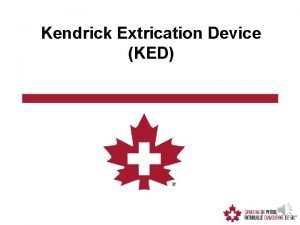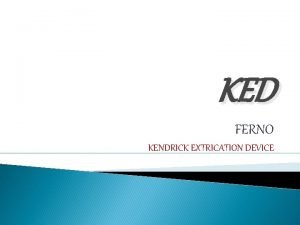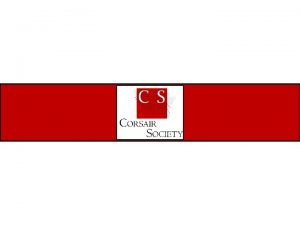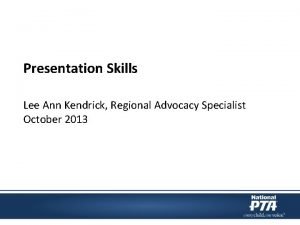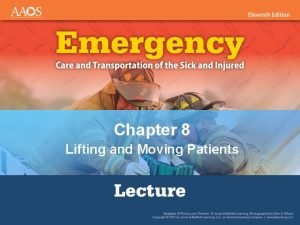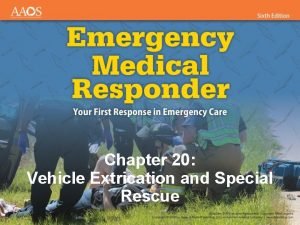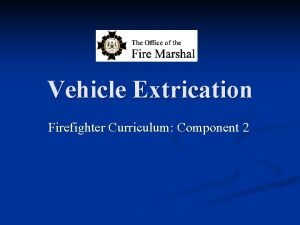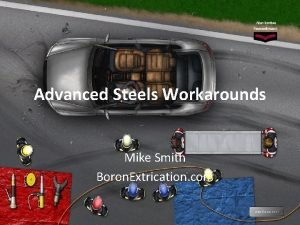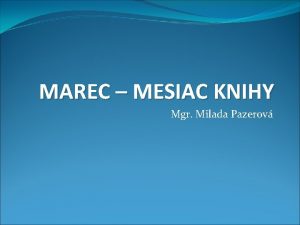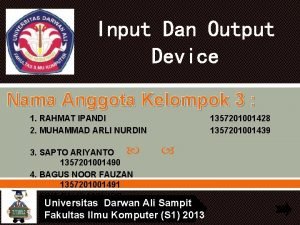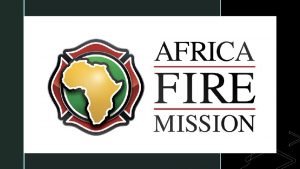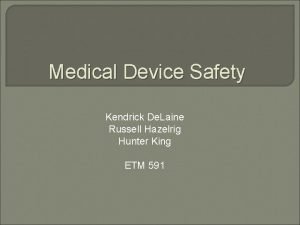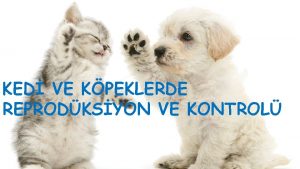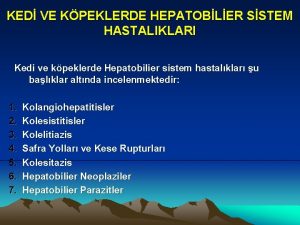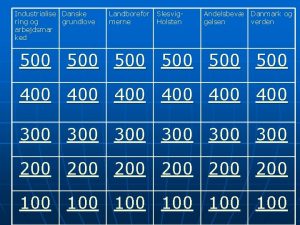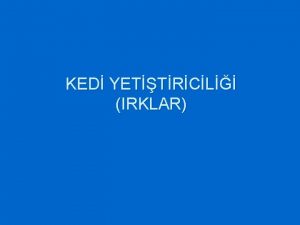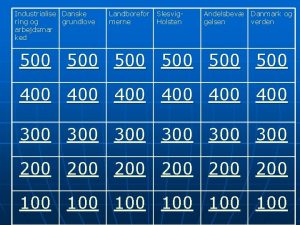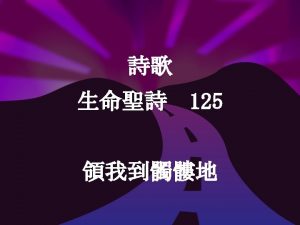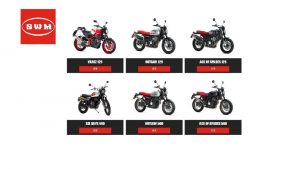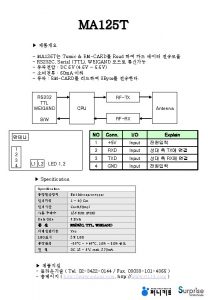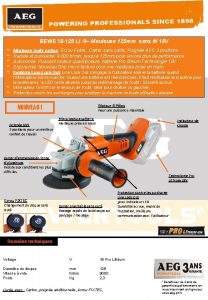Kendrick Extrication Device KED p The Model 125






























- Slides: 30

Kendrick Extrication Device (KED)

p The Model 125 KED (Kendrick Extrication Device, referred to as the KED in this Power. Point) is an emergency patient-handling device designed to aid in the immobilization and short transfer movement of patients with suspected spinal/cervical injuries or fracture. p The KED is designed for use by a minimum of two trained personnel. Additional help may be preferred or needed. p The load limit is 500 lbs or 227 kgs The KED is ALWAYS to be used with a cervical collar for CSpine control and ALWAYS use a backboard and straps 2

When and Where p when a backboard CAN NOT be directly applied AND/OR n you have to move or carry a patient a distance to a backboard n if a pelvic or hip injury is suspected (backboard is still used!) n if a femoral fracture is suspected (backboard is still used!) p can be used on anyone, any size p area protocols will determine how the KED is brought to the scene 3

Components p The KED is constructed with three torso straps: top, middle and lower. The straps are colour coded for easy B matching of left and right pieces. C A- Head Straps B- Lifting Handles C- Leg Straps D- Head Flap E- Torso Buckles F- Torso Straps G- Leg Buckles H- Torso Flap I- Adjusta-Pad A E B G D F H I 4

Shortening and Securing the Straps Release strap Connect buckles Feed and pull to Tighten 5

Strap application order p The order for fastening straps by repeating this phrase “My Baby Looks Hot Tonight. ” n My= Middle Strap n Baby = Bottom Strap n Looks = Leg Straps n Hot = Head Straps n Tonight = Top Strap 6

Torso Strap Fastening 1. Middle (Yellow)KED is tight to underarms. 2. Bottom (Red) 3. Legs (Black) “Criss-Cross” or “Same Side” 7

Securing the Head 1. Padding the void 2. Wrapping the head flaps 3. Opening the Head Straps 4. The head secured 5. Secure top strap (Green) 8

Moving Patient to a Backboard K. E. D. applied Tighten or loosen leg straps as needed Loosening top (Green) Torso Strap for patient comfort 9

p Immediately loosen the top (green) torso strap to allow the patient more chest expansion n Note: Keeping the remaining straps tightened provides stability for the patient during the starts, stops, and corners of the toboggan ride. p Tighten leg straps if necessary. n Properly applied leg straps will loosen when the patient is placed supine on the spine board. Apply a head immobilizer. p Secure the patient on the spine board with the spine board restraints. p 10

Putting It All Together KED is tight to the armpits! Apply the Cervical Collar Wrapping the Torso Flaps Around the Patient Moving the Patient back into 11 the KED

Fasten Middle strap Fasten Leg Straps “Criss-Cross or “Same Side” -pad legs if required Fasten Bottom Strap 12

Back view of Leg Straps when correctly positioned close to the body midline Positioning the Adjusa-pad 13

Wrapping the Head Flaps with the padding in place Head Straps Applied The KED applied 14

Adapting the KED for a Pregnant Patient p When applying the KED to a pregnant patient, fold two slats inward on each torso flap to leave the abdomen exposed. Positioning Torso Straps beneath breasts/above abdomen Two-Strap configuration Three-Strap configuration 15

Adapting the KED for a Pediatric Patient p The patient’s size and condition determine how the KED can be adapted for a child. p In this example of one possible method, the child’s legs are longer than the KED so the KED and child are placed on a long spine board. p A folded blanket is placed on the child so the torso flaps can be wrapped and fastened normally (next slide). 16

Applying the KED to a child – note the position of the head flaps 17

Hip And/or Femur Stabilization p The KED and patient are placed on a long spine board with the head portion of the KED toward the foot end of the board. p The torso portion of the KED is positioned a little above the waist and centered (next slide). The torso flaps are secured around the patient and the head flaps are wrapped around the patient’s injured leg and secured with the KED head straps. 18

Stabilizing the Hip and/or Femur – note the position of the Head Flaps 19

Pelvic Stabilization p The KED and patient are placed on a long spine board with the head portion of the KED toward the foot end of the board. p The torso portion of the is KED positioned a little above the waist and centered. p The torso flaps are secured around the patient’s pelvic area and the head flaps are wrapped around both the patient’s legs and secured with the KED head straps (next slide). 20

Stabilizing the Hip and/or Femur – note the position of the Head Flaps 21

Storing the KED 3. Making the first fold 1. Turning the Buckle under 2. Folding Accordion style 4. Securing the Straps 22

5. Wrapping the Leg Straps 6. Securing the Folded Strap in the Fastener 7. Positioning the Adjusta-Pad and Head Straps 23

8. Folding the Torso Flap 9. Rolling the KED 10. Ready for the case/bag 24

Remember p. Always use a cervical collar if spinal injury is suspected p. Always use a backboard and straps to transport p. Now practice!! 25

One Patrol’s Kit 26

What's In The Bag? ? 27

The 3 Handles 28

Ice pick Rope Carabineer 29

Climbing Webbing Folding Saw 30
 Kendrick extrication device powerpoint
Kendrick extrication device powerpoint My baby looks hot tonight
My baby looks hot tonight Input device output device storage device
Input device output device storage device Kendrick addaman
Kendrick addaman Identifying and managing project risk tom kendrick
Identifying and managing project risk tom kendrick Ann
Ann Extrication is defined as
Extrication is defined as Nader pin
Nader pin Rapid extrication technique
Rapid extrication technique Phases of extrication
Phases of extrication As an emr, your two primary extrication goals include:
As an emr, your two primary extrication goals include: Which is a correct rescue-lift air bag safety principle?
Which is a correct rescue-lift air bag safety principle? Vehicle extrication diagram
Vehicle extrication diagram Boron extrication
Boron extrication Extremity lift carry
Extremity lift carry Vehicle extrication lesson plan
Vehicle extrication lesson plan Keď mám peknú knižku v ruke
Keď mám peknú knižku v ruke Eds kedschool
Eds kedschool Prežívam radosť v srdci svojom akordy
Prežívam radosť v srdci svojom akordy Ked cervena zablika
Ked cervena zablika Mikko saastamoinen
Mikko saastamoinen Li,ked in
Li,ked in čo povedal pán ježiš kajúcemu lotrovi na kríži
čo povedal pán ježiš kajúcemu lotrovi na kríži A tagout device is preferable to using a lockout device.
A tagout device is preferable to using a lockout device. Monitor output
Monitor output Hát kết hợp bộ gõ cơ thể
Hát kết hợp bộ gõ cơ thể Ng-html
Ng-html Bổ thể
Bổ thể Tỉ lệ cơ thể trẻ em
Tỉ lệ cơ thể trẻ em Voi kéo gỗ như thế nào
Voi kéo gỗ như thế nào Tư thế worm breton là gì
Tư thế worm breton là gì
